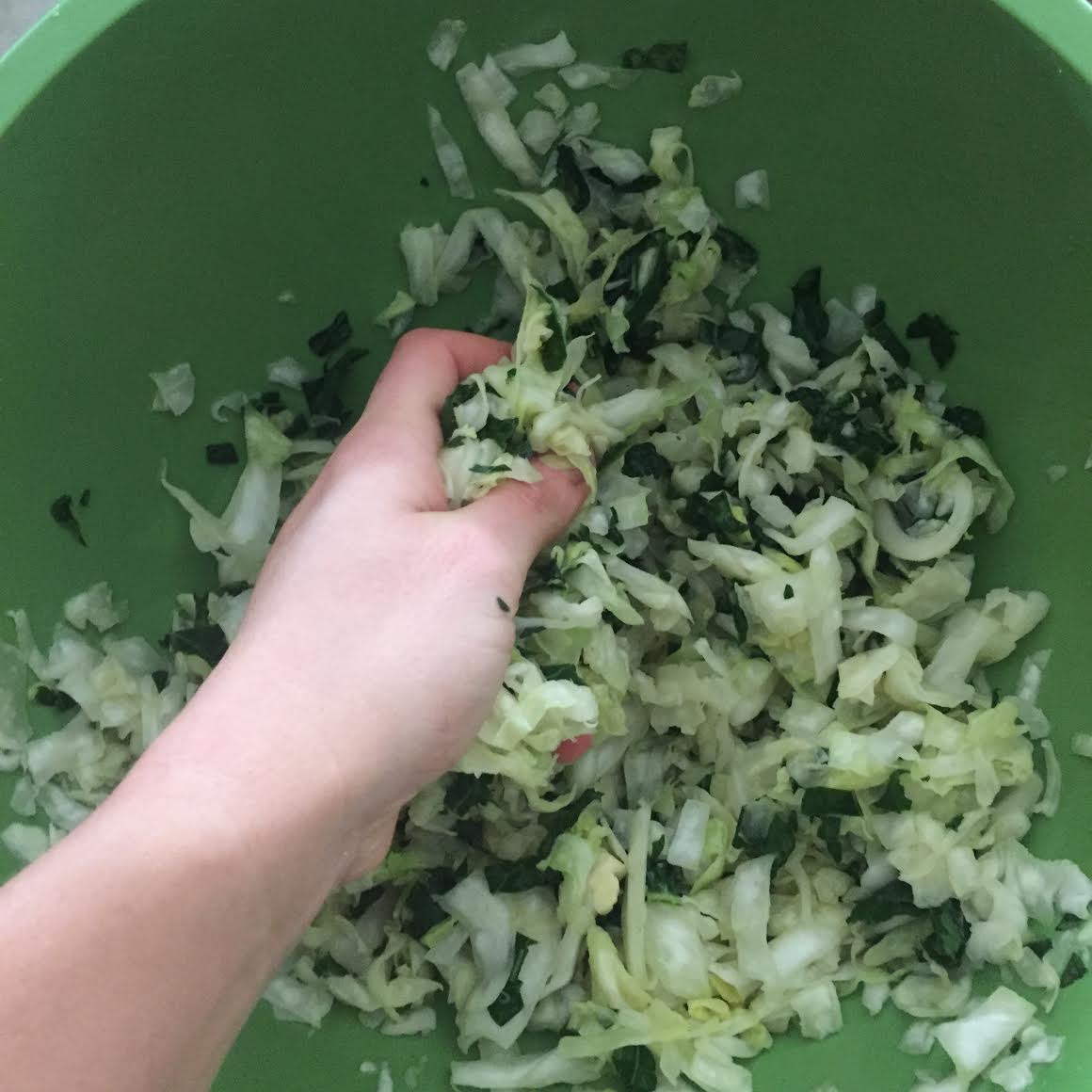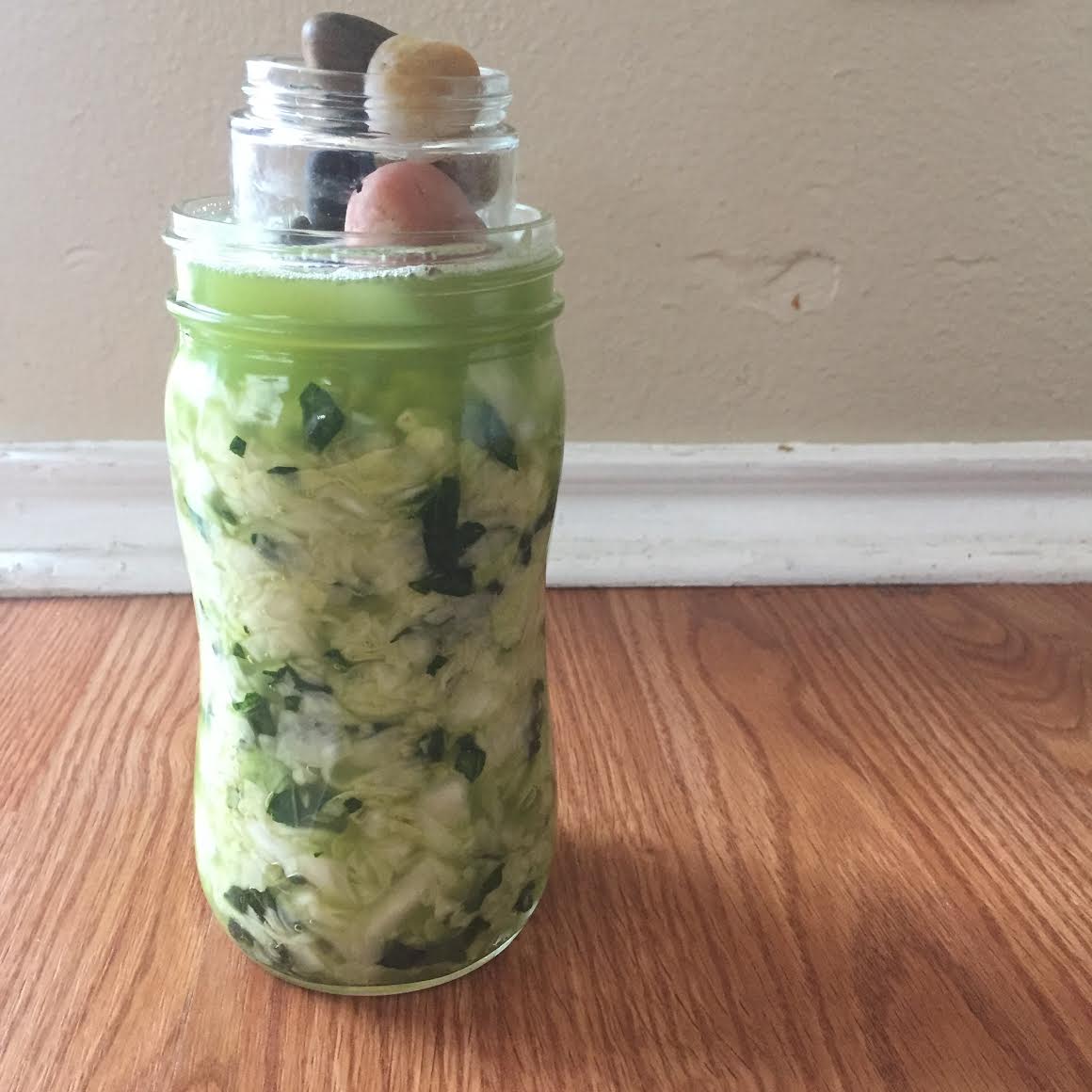I didn’t grow up eating sauerkraut. My family is jewish. We like sweet things, not sour. Think kugels, matzo balls, bagels, latkes….a whole lotta gluten; not a lot of brine.
I think I always thought of sauerkraut as being the thing you always got as a side at every summer BBQ or as a side with your burger (even if it was a veg burger like mine) at a restaurant. I never ate it. It looked slimy and seemed to have a film of mayonnaise all over it. Also, there was so very little of it, I could ignore it pretty easily.
I have no idea, still to this day, if that was in fact sauerkraut, but it certainly left an impression. I stayed as far away from sauerkraut as I could until a few years ago.
It didn’t help that I hate pickles and didn’t have much experience with fermented foods outside of miso and beer.
A few years ago, I started studying Ayurveda, which is a more holistic approach to healthy living than western health. I learned about the many reasons why gut health is so essential and how so many of us don’t even know what that feels like or how to create it.
Sauerkraut was introduced to me as a simple food that supports a healthy gut. Full of probiotics — bacteria that line your intestinal tract and help your body absorb nutrients, boost your immune system, and fight infection or viruses, among other amazing benefits (read about probiotics here)
My digestion wasn’t awesome, so I added store-bought sauerkraut to my life. Turns out, sauerkraut is nothing like icky tasting pickles (sorry pickle lovers). A little sour and tangy, but also full of other flavors, because there is endless variety with what you can add to sauerkraut. Also, my digestion immediately improved.
And, in a weird twist of fate, my super picky eater LOVES sauerkraut. She’s eat it straight from the jar if I let her, which I sometimes do.
Eventually, I decided it would be way less expensive to make my own sauerkraut than to keep buying the stuff (a 12oz jar could easily cost $10, while a head of cabbage might cost $2).
Sauerkraut is insanely easy to make. You just need to plan in advance because it needs a little daily attention while it sits and ferments, usually for at least a week but you can go longer. The longer it sits, the more sour and tangy the sauerkraut gets.
If you’ve got the itch to make more of your own food, I highly recommend you try making sauerkraut.
Here’s how:
Simple Homemade Sauerkraut
Ingredients~
1 head of cabbage, thinly sliced ribbons and cut away the center core and any other tough parts
1 Tbs salt (or more if you need it — depends on the size of your cabbage)
a little water, as needed
Directions~
Place the cabbage and salt in a large bowl. Using your hands, start squeezing and massaging the salted cabbage to let some of the cabbage juices out (yes….cabbage juices. Betcha didn’t know there were cabbage juices!).
You can do this cabbage massaging for 5-10 minutes. Depends how fresh your cabbage is. The salt will help break it down, though, so make sure you’ve pre-salted.

Once it’s nice and squishy, jam it into a mason jar. Some of the excess cabbage juices should start pushing up above the surface of the cabbage. You want enough to cover the uppermost layer of cabbage. If not, add a little water and tamp it all down some more. Then weight it with a small glass jar with rocks (pictured above, although ideally your rock jar should be at level with the rim of the jar. Mine wasn’t for this batch, which made for awkward covering, but it worked regardless).
You need to weight down the cabbage strands because if the water goes below the surface, you will get mold. No one wants moldy sauerkraut. So tamp down well, check the status of your cabbage juice every day, and add a little water as needed.
Cover it all with a cloth and secure with a rubber band so no bugs or dirt gets in.
Let this cabbage concoction hang out on your counter for at least 3 days. 7 is better. 2 weeks is fantastic.
Once you’re ready to eat, go ahead and cover it with a lid that actually seals and store in your fridge.
SUPER DUPER SIMPLE, RIGHT?
If you want to play around with some ingredient variations you can try adding:
parsley
lemon
garlic
seaweed
carrots
kale or collards
basil
cilantro
ginger
Experiment and have fun. I usually do small batches from a large head of cabbage. So half of the cabbage will ferment one way (lemon and parsley is a favorite) and the other batch will ferment separately, a different way (I love seaweed in my kraut).
Once you make your own at home, there’s no going back to store bought unless you’re in a pinch.




